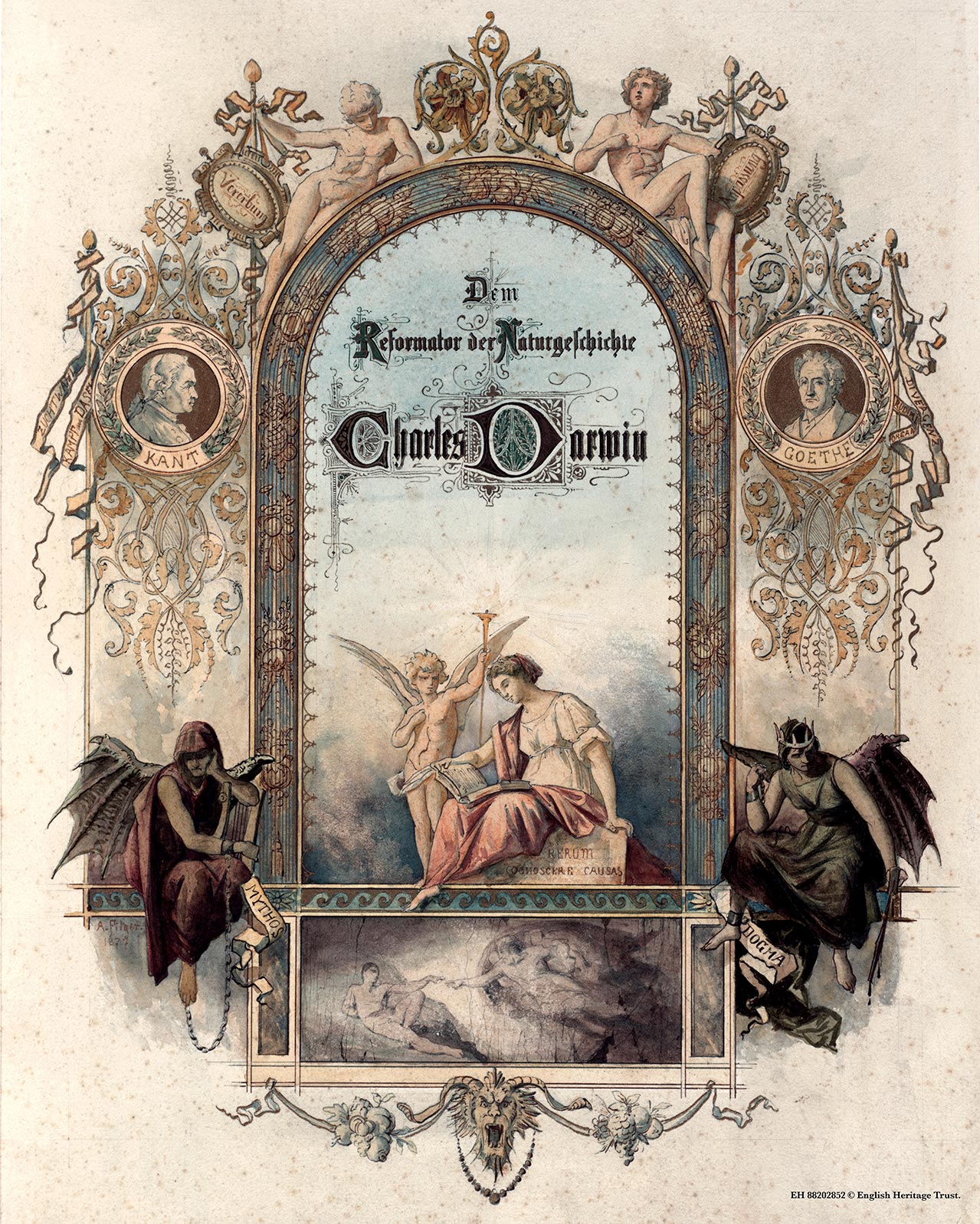The album was sent to Darwin to mark his birthday on 12 February 1877 by the civil servant Emil Rade, and contained 165 portraits of German and Austrian scientists. The work was lavishly produced and bound in blue velvet with metal embossing. Its ornate frontispiece was designed by the painter Arthur Fitger and dedicated: 'Dem Reformator der Naturgeschichte Charles Darwin' (to the reformer of natural history Charles Darwin).
Most of the people in the album were faculty members of German and Austrian universities. They were arranged by institution and professional rank, with professors in larger portraits at the centre or the top of the page. Ernst Haeckel was given special prominence, with a full-page portrait at the front of the album. He also appeared at the centre of a group photograph of zoology students at Jena. On receiving the album, Darwin wrote to Haeckel:
The album has just arrived quite safe.- It is most superb. It is by far the greatest honour which I have ever received (Letter to Ernst Haeckel, 16 February 1877)
Images: © English Heritage Trust. Delivered by: Cambridge University Digital Library.
Scroll through the list of Album Contents on the right, and click on an entry to jump to the page.
Darwin's age was miscalculated by the album's creators and the birthdate on the front cover is 1808 instead of 1809. The album was intended to commemorate his 69th birthday, the start of his 70th year, but Darwin was only 68 in 1877.
Despite this oversight, the album was widely reported and well received in the British press. On reading about the album in the journal Nature, one of Darwin's oldest friends Leonard Blomefield (formerly Jenyns) wrote to Darwin to congratulate him:
No more decided mark of approbation could have been stamped upon the many years' hard work you have devoted to the Natural History Sciences,-nor better proof afforded of the favourable view foreigners take of the theory you have laboured to establish.-
It must be a great satisfaction to you in the evening of life to think that your researches, so multifarious & at the cost of so much health & trouble,-have come at length to be duly appreciated;-& that both you & your theories have outlived the fierce opposition that was made to them when first laid before the scientific world.- (Letter from Leonard Blomefield, 12 March 1877)
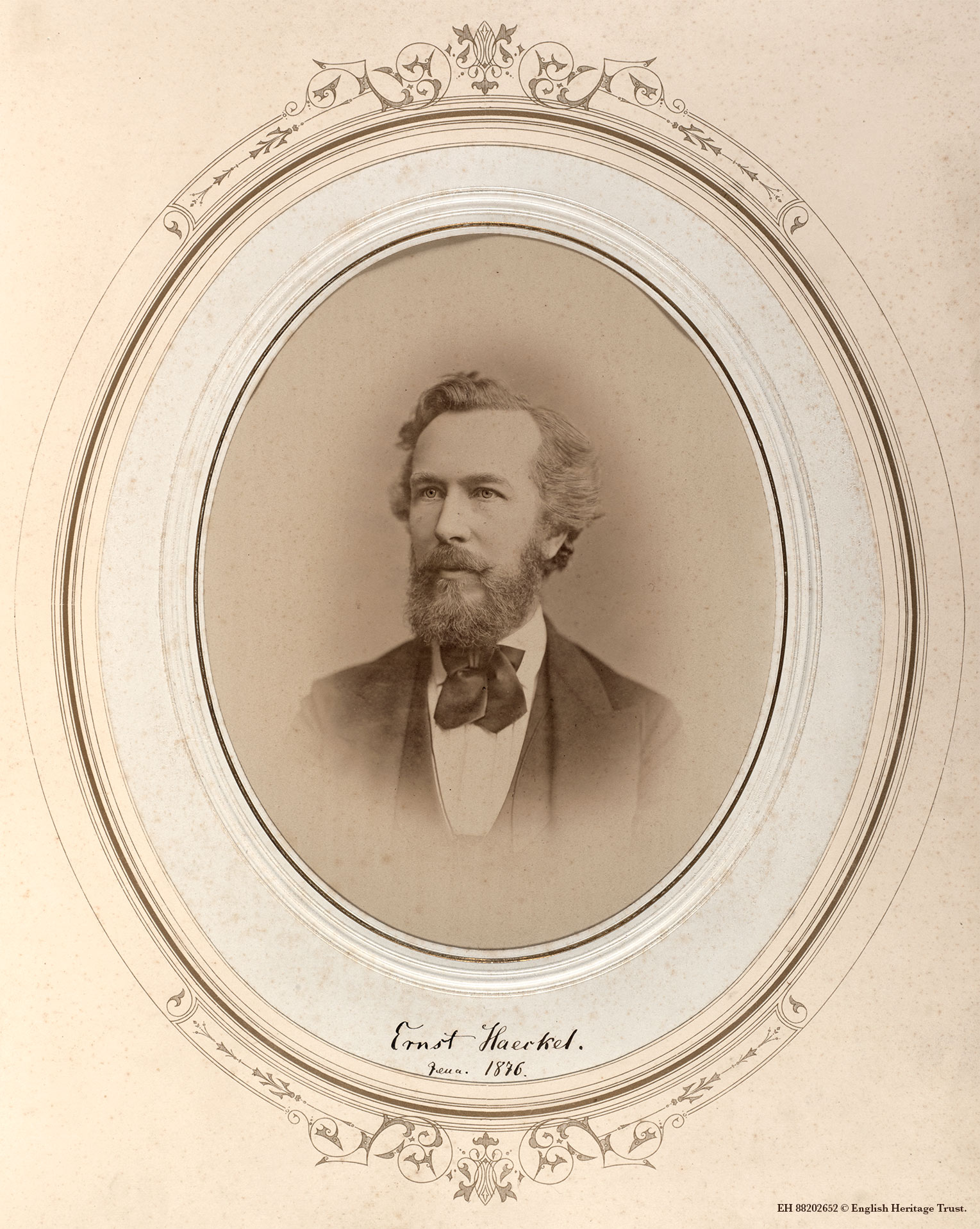 Familiar faces
Familiar faces
Ernst Haeckel had been the driving force behind the album, acting as gatekeeper to which contributors were to be allowed in. The comparative anatomist exchanged over 90 letters with Darwin and was Darwin's most vocal supporter in Germany. Despite being the instigator, it appears that Haeckel was not satisfied with the final album. He wrote to Darwin on 9 February 1877: 'what will perhaps astonish you is that the number of contributors is not larger and the production is not more splendid'. Darwin replied: 'The album contains some of the most highly honoured names in Germany, & your own photograph is wonderfully good.'
Among the names of geologists, zoologists, physicians, and philosophers some were known personally to Darwin through correspondence. Ludwig Büchner, Ferdinand von Hochstetter, Ludwig Jeitteles, Oskar Schmidt, and Fritz Schultze had all sent Darwin their works. Carl du Prel had even tried to apply Darwinian principles to the inorganic world of stars in his book Der kampf ums dasein am himmel (The struggle for existence in the sky).
 Arnold Dodel-Port had sent his book based on his lectures on the theories of descent and selection. Darwin later praised the drawings in the atlas of botany aimed at universities and middle schools that Dodel-Port produced with his wife Carolina. Eduard Koch took over as Darwin's German publisher in 1867 and published a multi-volume edition of Darwin's works. Otto Zacharias had popularised Darwin's theories in the magazines he edited, and the politician and philosopher Bartholomaeus von Carneri produced works on the moral implications of Darwinism. Carl Vogt had corresponded about atavism and Wilhelm Breitenbach sent his observations on orchids and the oxslip for Darwin's work on Forms of flowers.
Arnold Dodel-Port had sent his book based on his lectures on the theories of descent and selection. Darwin later praised the drawings in the atlas of botany aimed at universities and middle schools that Dodel-Port produced with his wife Carolina. Eduard Koch took over as Darwin's German publisher in 1867 and published a multi-volume edition of Darwin's works. Otto Zacharias had popularised Darwin's theories in the magazines he edited, and the politician and philosopher Bartholomaeus von Carneri produced works on the moral implications of Darwinism. Carl Vogt had corresponded about atavism and Wilhelm Breitenbach sent his observations on orchids and the oxslip for Darwin's work on Forms of flowers.
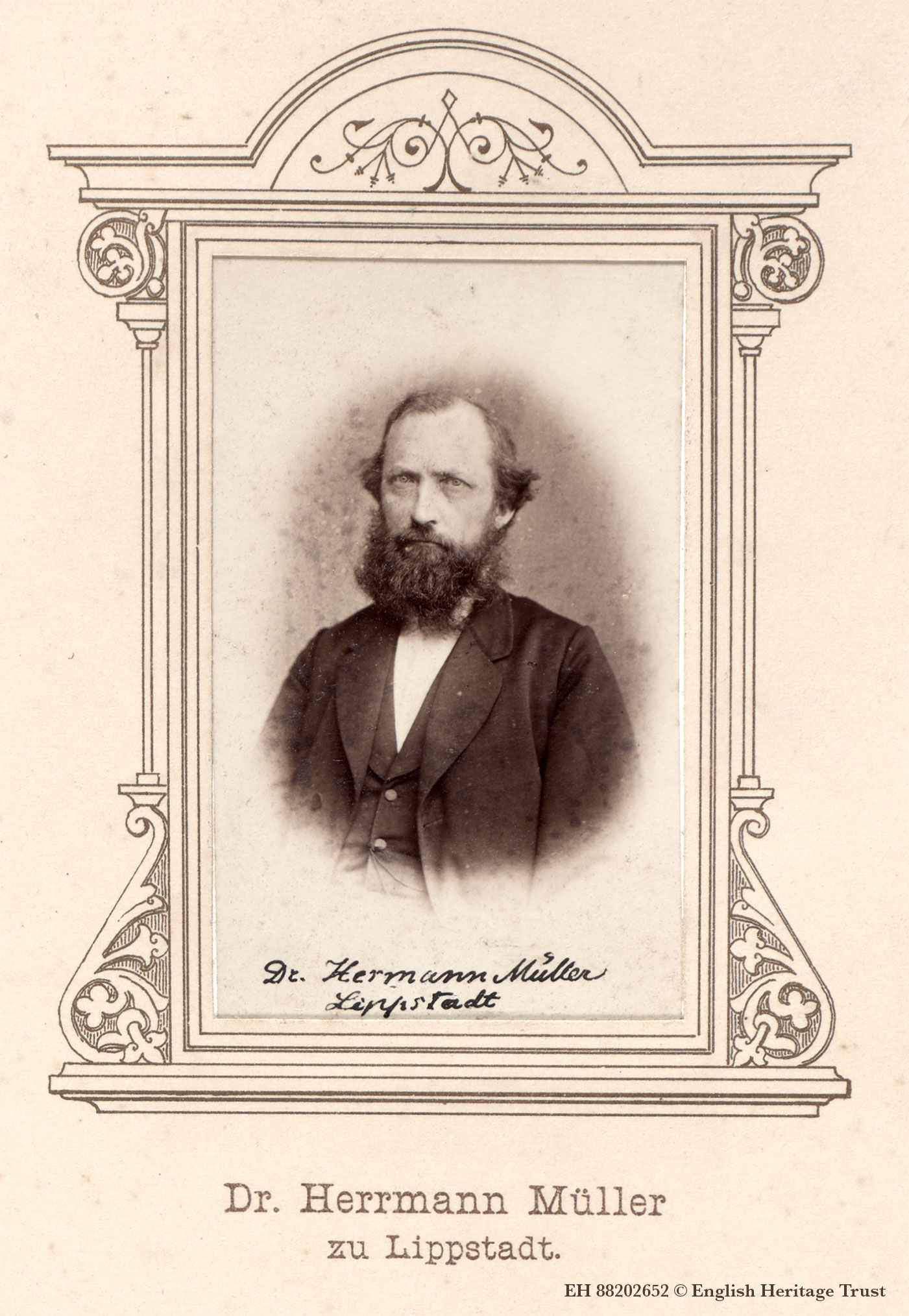 Darwin must have been particularly delighted to see the picture of the German schoolteacher and botanist Hermann Müller in the album. He had encouraged Müller's research on the fertilisation of flowers by insects from the mid-1860s, research that led Müller to publish important work on mutual adaptation. Also featured was the science writer Ernst Krause, who edited Kosmos, a German journal
Darwin must have been particularly delighted to see the picture of the German schoolteacher and botanist Hermann Müller in the album. He had encouraged Müller's research on the fertilisation of flowers by insects from the mid-1860s, research that led Müller to publish important work on mutual adaptation. Also featured was the science writer Ernst Krause, who edited Kosmos, a German journal 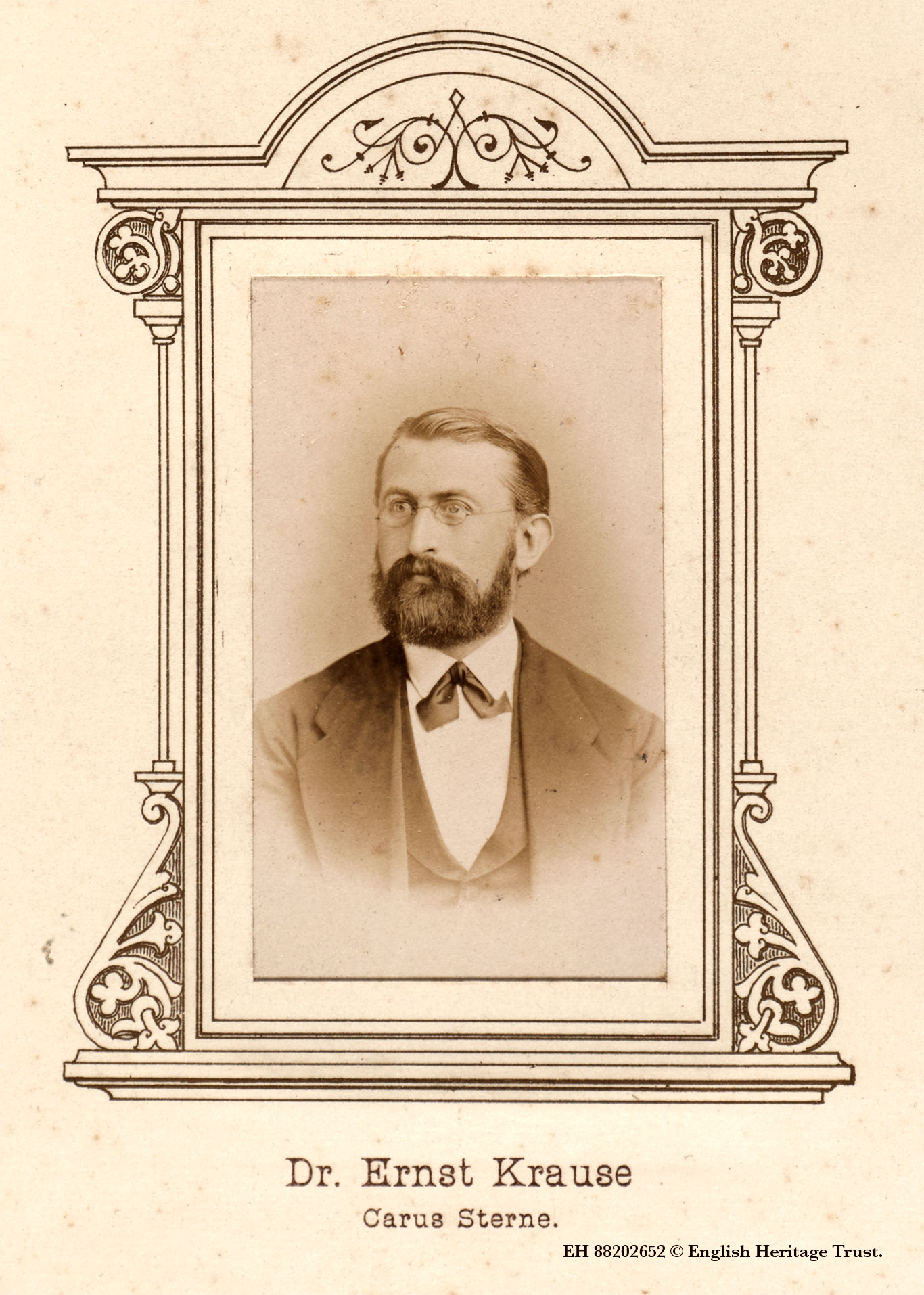 of natural history founded in Darwin's and Haeckel's honour, with two other Germans whose photographs appeared in the album, Otto Caspari and Gustav Jäger. Krause wrote an essay on Darwin's grandfather, Erasmus Darwin, which Darwin had translated into English to use as part of a biography of his famous relative. More contributors to the album became correspondents of Darwin after it had been produced, including the German geologist, Melchior Neumayr, and the Austrian physiological botanist, Julius Wiesner.
of natural history founded in Darwin's and Haeckel's honour, with two other Germans whose photographs appeared in the album, Otto Caspari and Gustav Jäger. Krause wrote an essay on Darwin's grandfather, Erasmus Darwin, which Darwin had translated into English to use as part of a biography of his famous relative. More contributors to the album became correspondents of Darwin after it had been produced, including the German geologist, Melchior Neumayr, and the Austrian physiological botanist, Julius Wiesner.
Missing people
Some of Darwin's German colleagues were missing from the album and they wrote to him to explain why. One of Darwin's 'most enthusiastic followers', Carl Friedrich Claus, had only learned about the tribute in the newspapers and regretted that he had not been invited to participate. Julius Victor Carus, who had translated most of Darwin's works into German, wrote that he had not sent his photograph to be included in the album:
because you have it already and because I thought, that you would trust on my most sincere devotion and heartfelt thankfulness for all you have done as a man of science and as the kindest friend, without a public testimonial, which I don't feel myself worth to give you (Letter from J. V. Carus, 22 March 1877)
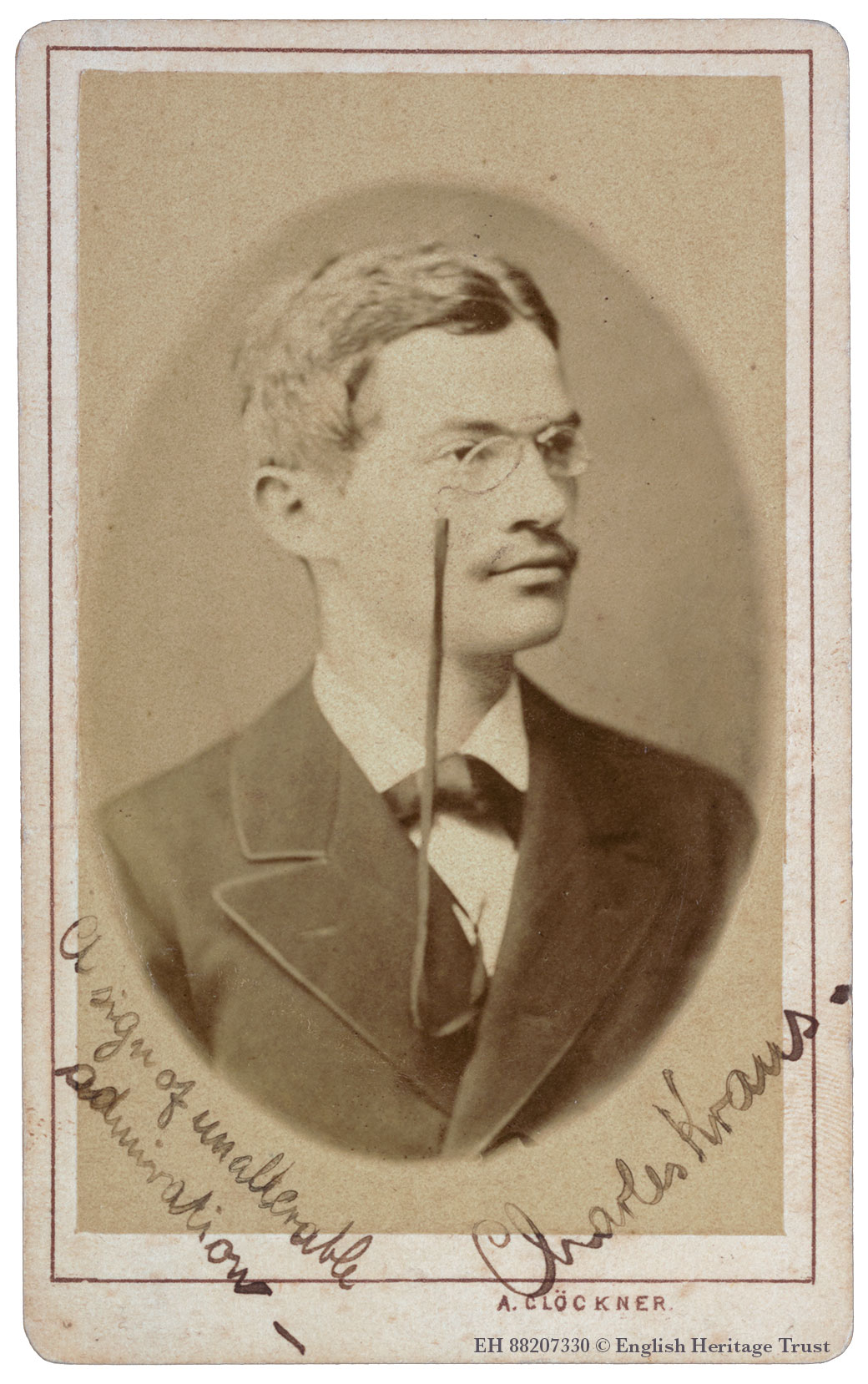 The professor of zoology at Würzburg, Carl Gottfried Semper, who had disputed Darwin's theory of coral reefs, felt that photographs were such bad portraits they were not worthy as presents. Instead, he sent his work 'On eyes of the Vertebrate type on the back of Molluscs' and dedicated it to Darwin, explaining:
The professor of zoology at Würzburg, Carl Gottfried Semper, who had disputed Darwin's theory of coral reefs, felt that photographs were such bad portraits they were not worthy as presents. Instead, he sent his work 'On eyes of the Vertebrate type on the back of Molluscs' and dedicated it to Darwin, explaining:
It appears to me that it had been a much better token of gratitude and devotion, if we German Naturalists would have presented to You on Your birthday a work containing new and original researches. The best photograph of a scientific man is to my understanding his scientific work. (Letter from C. G. Semper, 26 April 1877)
Carl Kraus, an agricultural scientist from east Bohemia, sent Darwin birthday wishes a year too late in 1878 and pleaded to have his photograph included in the album:
As a supporter of the freedom of research, I would consider myself fortunate to have the chance to demonstrate my admiration and gratitude in a suitable manner to my ideal of a free scientist, "Charles Darwin", the untiring champion of the freedom & truth of science ... I shall permit myself, at your most kind request, to send you my most recent photograph soon, & I hope that you, most esteemed Sir, will kindly incorporate it in the German album (Letter from Carl Kraus, 10 February 1878)

